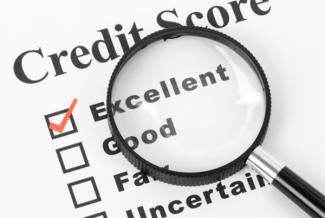
What You Have To Know About Credit Card Utilization And Your Credit Score
Credit card utilization refers to how much of your available credit you use on a monthly basis and is a metric often used in credit scoring algorithms. It is defined as your total open credit card balances divided by your total open credit card limits. The resulting percentage is a component used by most of the credit scoring models because it is often correlated with lending risk. Generally speaking, the higher your credit card utilization, the lower your credit score.
Why does it impact my credit score?
The utilization rate is an important indicator of lending risk. A person who constantly charges all of the money they can, hitting or going over their credit limit, is far more likely to have difficulty repaying that money than a person who uses their credit cards sparingly.
How does it impact my credit score?
As there are dozens of different credit scoring models, it's difficult to calculate exactly how credit utilization will impact your credit score. However, there is a strong correlation between a consumer's credit card utilization rate and their credit score. Those who keep their utilization percentage low (but above 0) on average have higher scores than those who constantly max out their credit cards.
High credit utilization on a single credit card could negatively affect a consumer with little credit history and only one card far more than it could someone with multiple cards and a long and excellent credit history.
Although it is an important factor in calculating your credit score, it is important to remember not to just focus on this one aspect of your credit score. Keep the big picture in mind.
How can I lower my credit utilization?
Here are three tips that may help you lower your credit utilization. One tip is to make credit card payments more than once a month so that your balance never gets too high. If you have more than one credit card, another good way you might lower your utilization is to use multiple cards each month. This results in various cards with low credit utilization rather than one with high utilization. Lastly, you could try to increase your available credit.
If your income has increased, if you've maintained an amazing credit history or if you have little debt, it doesn't hurt to ask for a credit limit increase. Just remember that this can sometimes result in a hard inquiry on your credit. If you lack excellent credit, you may want to consider opening a secured credit card and adding to its security deposit over time.
Other tips
You do not have to carry a credit card balance or pay interest every month to show credit card utilization. Even if you pay your credit card balances in full every month, simply using your card is enough to show activity.
Experts recommend keeping your credit card utilization below 30 percent on each card and collectively. This shows lenders that you know how to spend responsibly and can help your credit score. However, creditors also care about the total dollar amount of your available credit, so if you have a low credit limit, it usually is not a big deal if your credit card utilization rate is slightly higher than recommended.
Although high credit utilization can be detrimental to credit scores, keeping credit utilization at 0 percent is not recommended either. Creditors want to see people who use their credit, but are able to manage it responsibly.

